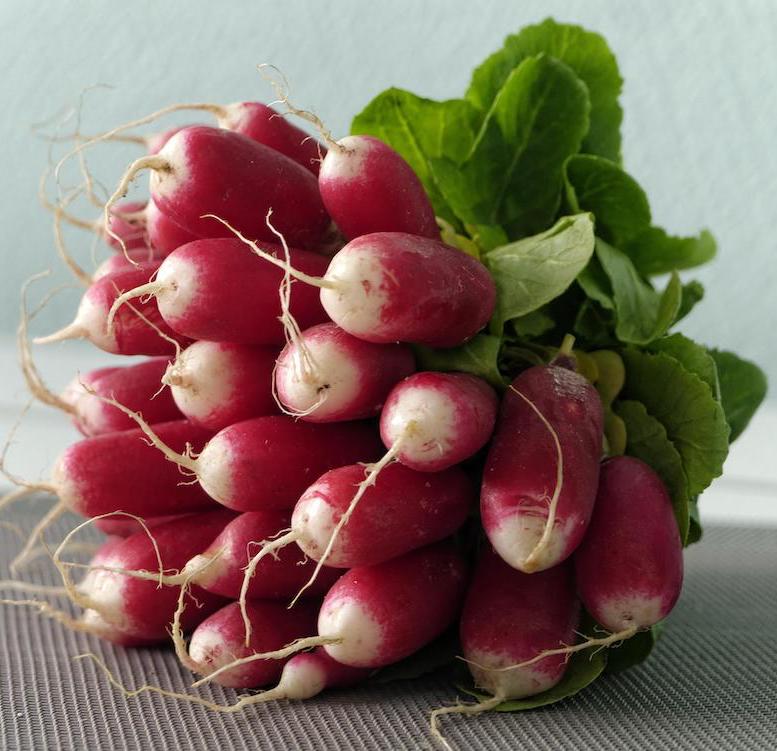Classification: Species
Synonyms / homonyms: Raphanus raphanistrum
 Radish
Radish
A fast growing and popular crop that can be ready in four weeks after planting the seedlings.
Origin
Radishes were cultivated in Asia and also found extensively used by the Romans and Greeks.
Where to Grow Radishes
Radishes grow best in soil that is rich and with a pH of around 5.8-6.8. If possible place the seeds in a row with at least 2-3 spare room on each side to give the radish room to grow. This will help you avoid having to thin them out at a later stage. If you are lazy then buy the seeds that are stuck on a tape - the whole strip is planted and you have the perfect spacing. (and you pay a little more)
They are a good in-between crop to grow as you wait for longer growing vegetables. They can be grown throughout winter as long as you don't have continual frosts or freezing temperature.
They like full sun.
You can grow radishes in pots, avoid using too small a pot size and make sure you have plenty of drainage.
There are 100's of different varieties and shapes. You'll find that generally there are one lot that are classed as 'garden radishes' and then daikon radishes and winter radishes.
French Breakfast - grow with the longer elongated shape, common in French markets
Culinary Uses for Radishes
Radishes are mainly eaten raw. Delicious sliced in salads, they give a spicy crunch to a dish.
The heat in the radish is caused by gucosinolates and the enzymes myrosinase. When chewed they form allyl isothiocyanate which you will also find in horseradish, wasabi and mustard.
Nutrition
Contain Vitamins E, A, C, B6 and K. They are also contain Magnesium, Calcium, Iron and Potassium

 Radish
Radish